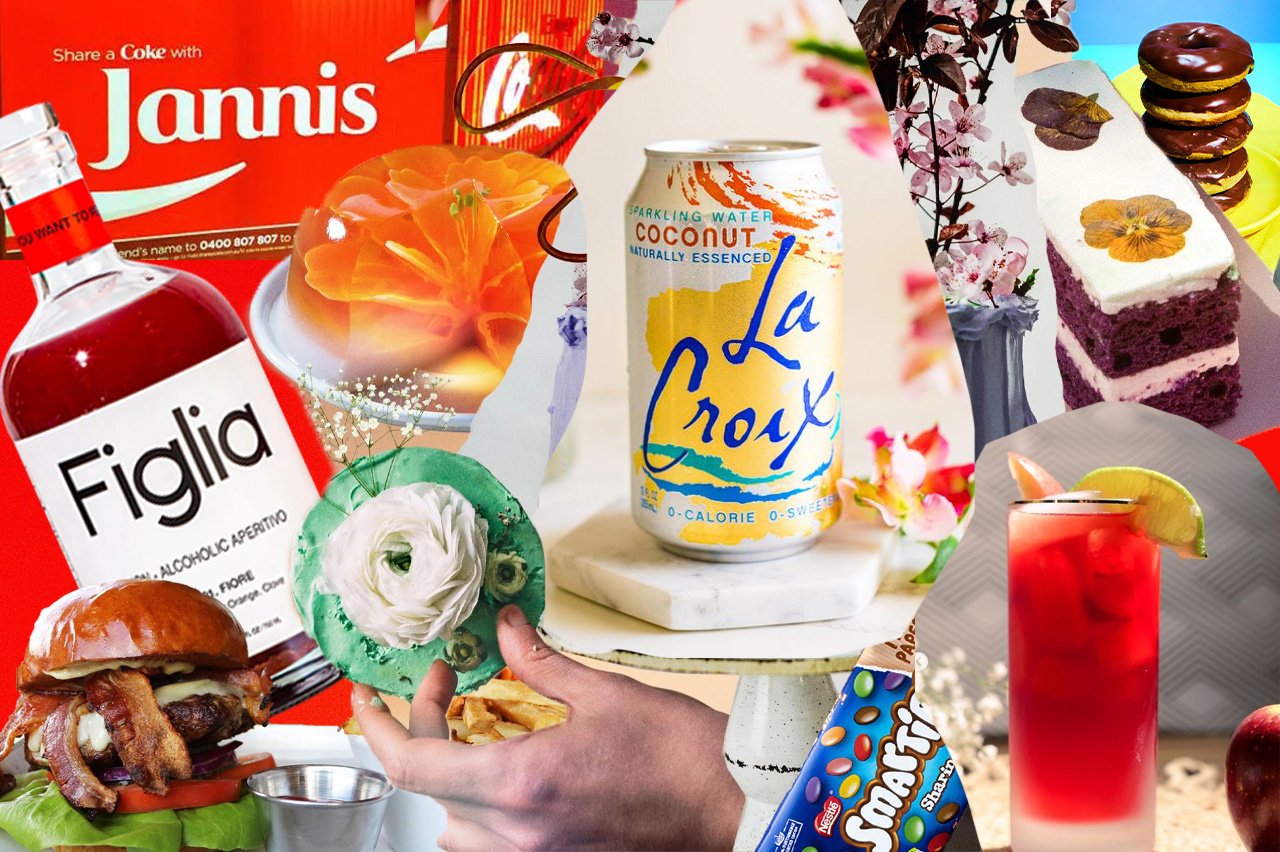10 Hottest Content Ideas For CPG Beverage Brands
Whether it's recipes or drink trends, beverage brands must produce relevant and engaging content to keep their audience interested. Otherwise, their message will get lost with so many brands fighting for your customers' attention on social media.
By adopting the right content ideas, beverage brands can successfully promote their products and connect with their prospective customers.
© Images of Firebelly Marketing, Pinterest, La Croix, Figlia, Nestlé UK, Bake Believe, Coca-Cola Australia, Karbach Brewing Restaurant and Patio
Proliferation of social
With social media being the dominant form of communication online, CPG brands have to create branded content. In addition, with shrinking margins and rising costs of raw materials, many food and beverage brands are refocusing on building their own communities and selling directly to their consumers to increase profitability.
Direct-to-consumer marketing strategy for CPG beverage brands must allow for numerous online advertising strategies to access a wider audience, with the most important, in our humble opinion being social media!
Social media creates a unique opportunity for brands to create community and authentic connections with customers. Check out our top 10 social media content ideas for beverage brands that you can steal (that means free of cost!) when planning your next round of social media content!
Hottest Content Ideas
We have to stick to what we know with this list. In our opinion, these are the best practices for beverages to explore. Overall, these content marketing ideas are essential in engaging, informing, and finding relevance in a crowded market:
1) Recipes
You can read our blog on recipes' importance over here.
Blogs and videos on recipes are highly shareable and offer consumers a visual guide to creating delicious meals or unique mixology in the comfort of their homes.
Recipe videos get more shares and engagement than any other type of food-related content. It’s the go-to source for learning something new amongst millennials.
Brands can create recipe videos to showcase their products or collaborate with influencers to feature them in their videos.
Case Study: Our client Bake Believe, a low-sugar chocolate company, has an entire page devoted to baking recipes. They also have each chocolatey goodness recipe simultaneously posted across Pinterest.
© Bake Believe Baking Recipes
2) Health and wellness
“43% of Americans claimed they are always on the lookout for healthy options...”
Brands can create content focused on healthy eating habits, mindful eating, and nutrition. By providing useful information and tips on healthy eating, brands can easily appeal to their health-conscious consumers.
According to the International Food Information Council, 43% of Americans claimed they are always on the lookout for healthy options; one in four consumers actively look for healthy options when shopping.
Case Study: LaCroix consistently markets itself as a healthy alternative to soda. The brand’s sparkling water is made with natural flavors and no added sugar. Slogans include: “Enjoy LaCroix, a calorie-free beverage with nothing artificial.”
3) Trending Content
Obviously, trends come and go. However, trends can create a ton of buzz for a brief time of relevancy. A great resource for staying on top of trends (and one of our agency secrets) is by visiting Pinterest Predicts for insights on what trends are coming up next.
© Pinterest Predicts
Because the people who use Pinterest are forward thinkers and are planning for the future, you can very often tap into real trends right before they peak!
At the moment of writing this blog - a top trend in the beverage industry is “Free Spirits”, a trend that highlights drinks and drink recipes with low or zero alcohol content.
Case Study: As they say about the non-alcoholic trend: “all the proof to go 0 proof.” Figlia is a brand that is tailored completely around the premise of mocktails. The zero-proof sparkling beverage brings effervescent bubbles and refreshing flavors to any beverage glass. In other words, Figlia is for sipping with intention, not hangovers.
© Figlia / drinkfiglia.com
4) Behind-the-scenes content
Consumers don’t like to think of their beverage as an overproduced offering. Permitting behind-the-scenes content can give the consumer an inside look at the brand and its products, specifically how the beverage is made or bottled.
Content can involve the production process, spotlight team members, or showcase brand values. It also helps build trust and loyalty with potential buyers, showing the human side of a brand.
Case Study: Our client Ash & Elm isn’t afraid to show their people, frequently publishing reels with videos of the brewery and the people that work there.
5) Food and beverage pairings
Each beverage can be paired with a different food or drink. It gives consumers inspiration for their next meal or party. Additionally, brands can collaborate with restaurants and chefs to create unique pairings and cross-promote their products.
Pairing drinks with specific foods can elevate the flavor and create a profound sensory experience for consumers.
Case Study: Karbach Brewing often pairs its craft offerings with our client RC Ranch’s Wagyu cuts.
© Karbach Brewing Restaurant and Patio
6) Sustainability First
“66% of global consumers are willing to pay even more for brands that identify as sustainable. ”
People, especially millennials, care about sustainable practices. Recyclable and compostable packaging are an eco-friendly alternative to corrosive plastics. According to a Nielsen CSR study, 73% of global millennials are willing to pay extra for these types of offerings; 66% of global consumers are willing to pay even more for brands that identify as sustainable.
Case Study: Nestle announced plans to use plant-based packaging materials for their products to reduce their environmental impact. The decision was reviewed widely in the strategy of numerous beverage brands; it’s also an easy talking point to publish across social media platforms.
© Nestlé UK
7) User-Generated Content
“79% of consumers claim that UGC highly impacts their purchase decisions. ”
CPG Beverage Brands can encourage their followers to share their own content, such as recipes or food photos, and repost them on their social media channels.
According to Stackla, 79% of consumers claim that UGC highly impacts their purchase decisions.
Case Study: Coca-Cola started the “Share a Coke” campaign, where customers could find bottles with their names on them and were encouraged to share pictures.
© Coca-Cola Australia
© Coca-Cola Australia
8) Aesthetic Beverage Photography
High-quality, visually appealing images can show off a product, enticing consumers to try them. These photographs can be incorporated into websites, social media platforms, and other marketing materials.
Case Study: We don’t want to brag, but we have some stellar pro photos we do on our Firebelly Marketing page.
9) Influencer Marketing
“39% of marketers plan to increase their influencer marketing budget this year. ”
By collaborating with influencers, brands can tap into their audiences and reach new consumers.
As per Linqia, 39% of marketers plan to increase their influencer marketing budget this year.
Case Study: Pepsi collaborated with popular beauty influencer Bretman Rock. The campaign featured a makeup look inspired by Brisk Iced Tea, in an attempt to make the beverage appealing to a younger demographic.
10) Virtual Events
Since the pandemic, virtual events have become increasingly popular to potential consumers. These events take many forms, including tastings, masterclasses, and mixology courses.
Usually, these events are on platforms that permit interactivity and engagement, such as Zoom or Webex.
Case Study: The “Don Julio Cocktail Class” was hosted by the premium tequila brand, Don Julio. The event featured a virtual cocktail-making class hosted by a master mixologist. Customers purchased a cocktail kit ahead of time, preparing them for the course that followed.
© Bodega Taqueria
P.S. - We have way more than 10 content ideas we can implement in your social media strategy. If you want to know more about our process and how we can help you create more community and excitement around your beverage brand, contact Firebelly today!









